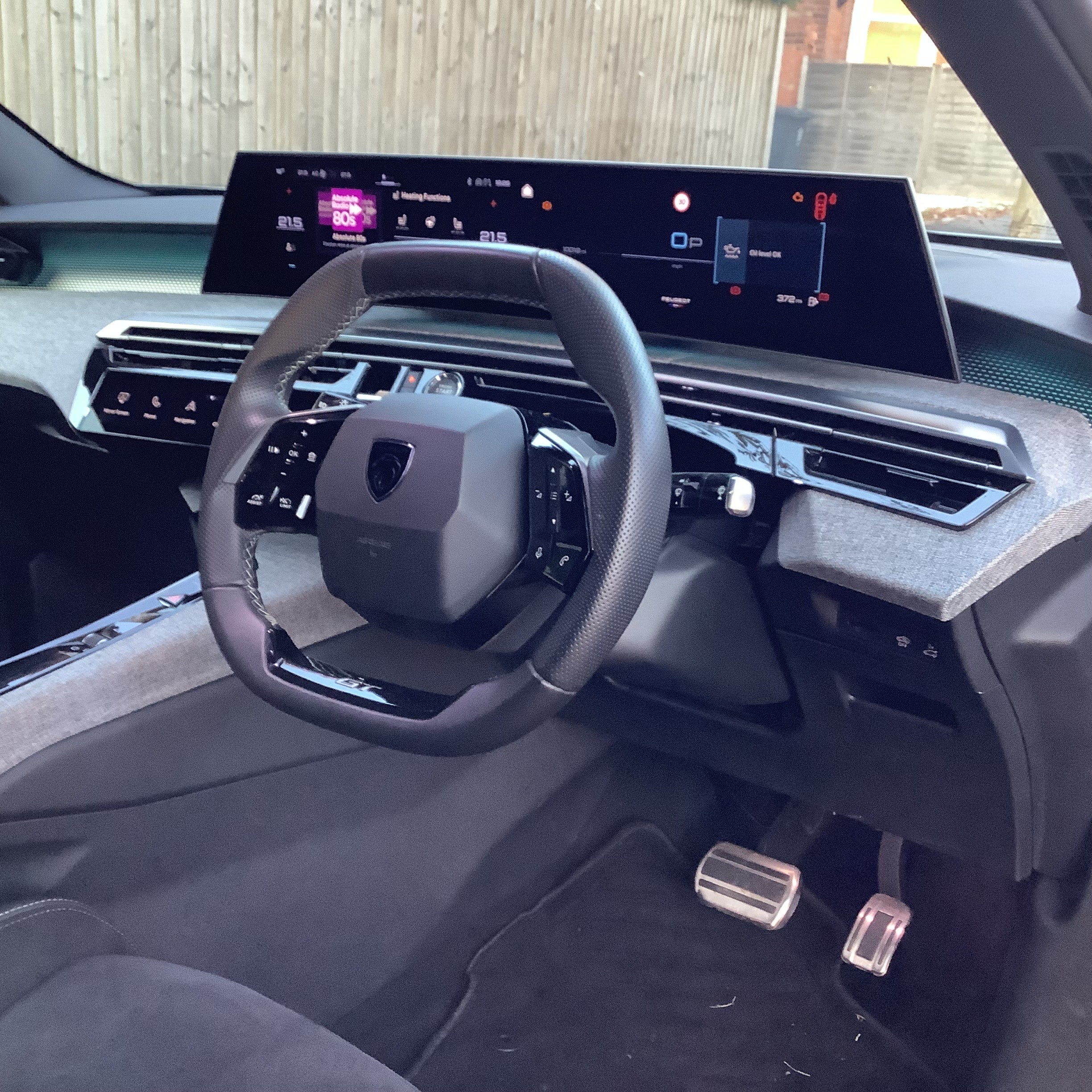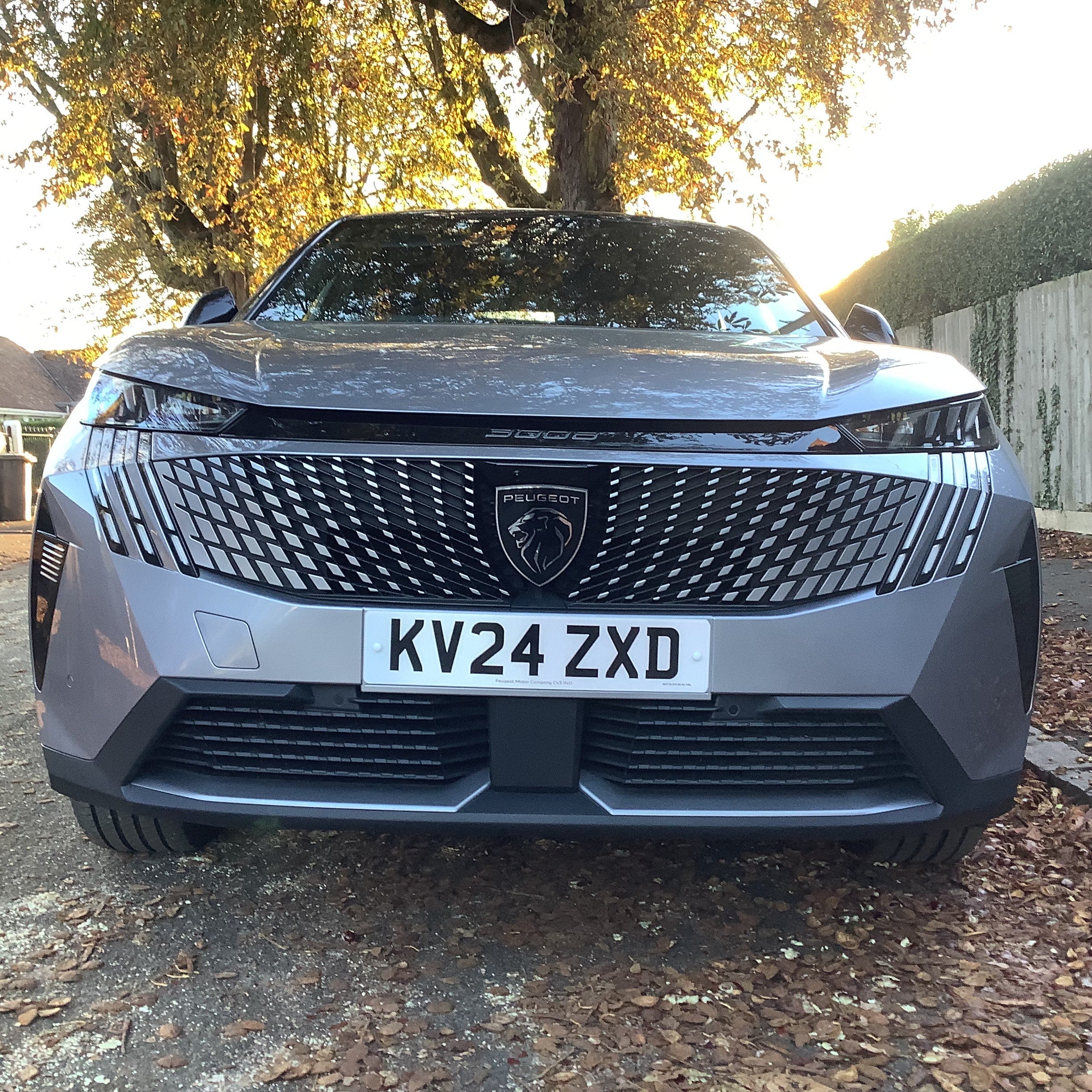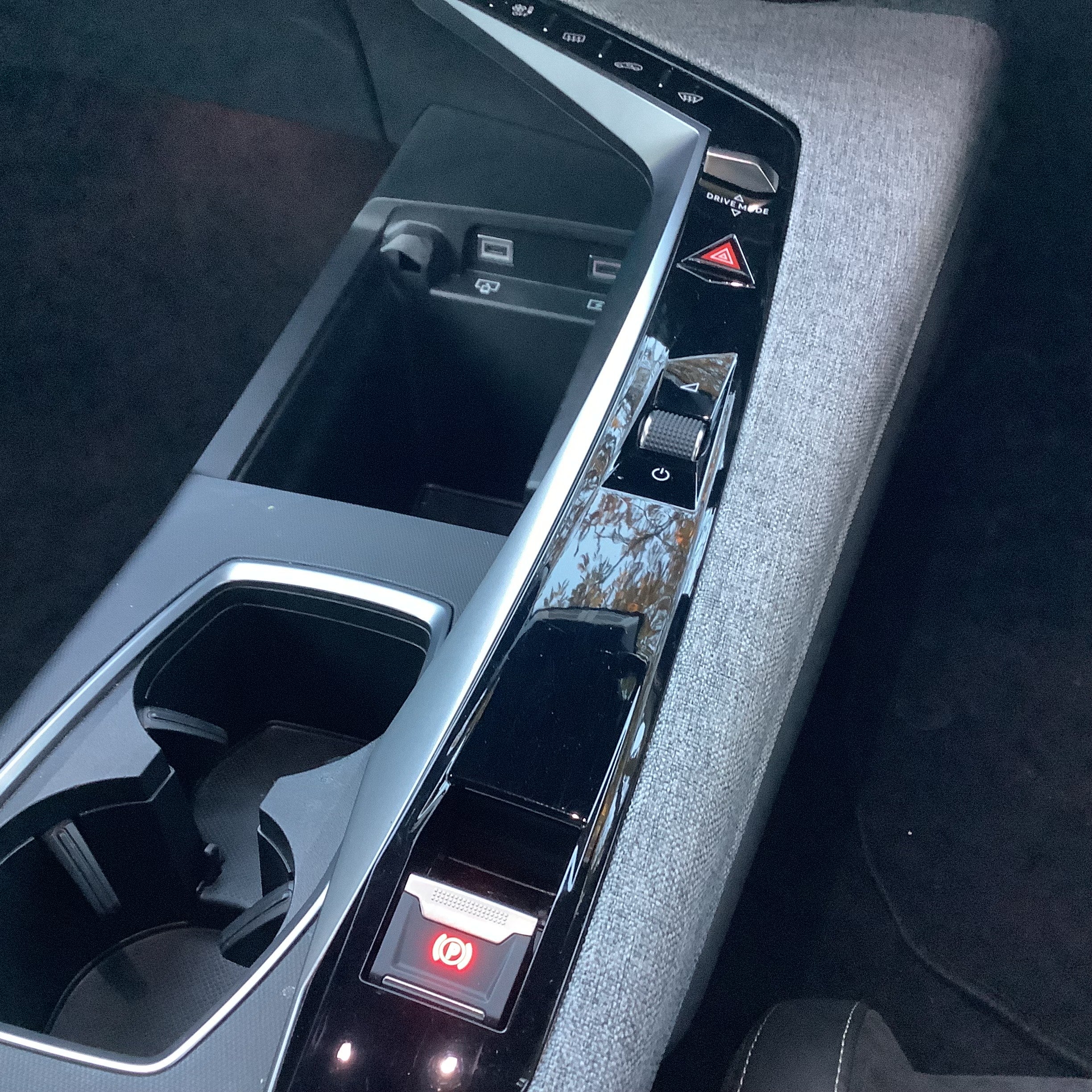It’s been some years now since Peugeot decided to try to move the marque a little bit back upmarket, concentrating on quality, real and perceived, and a bolder, more distinctive approach to design. Well, the marque is still not bracketed with the holy trinity of Audi, BMW and Mercedes-Benz, but the latest iteration of the 3008, a mid-market staple, shows the designers’ efforts haven’t been in vain.
The interior is, or should be, what sells this car. It’s stunningly modern without being self-consciously “futuristic” for the sake of it, and the curved 21-inch high-definition digital screen, actually perched on the dash like a piece of domestic audio equipment, is something of a scene-stealer and talking point.
The long, trapezoidal shape grabs the attention immediately, and rightly so. Subtly decorated with a little French tricolour (this model is manufactured solely at the historic Le Sochaux works), with the dials placed almost directly in your eyeline, it offers something like the electronic “heads up” display available on, well, more premium products, but without the complexity.

It’s complemented with a notably small and chunky steering wheel, which doesn’t especially appeal to me, but is easy to get used to – and the steering is light. Peugeot calls this its “i-Cockpit”, and is extremely proud of it – so much so that only the Peugeot brand is allowed to use it within the sprawling, Peugeot-controlled Stellantis empire – Vauxhall, DS, Alfa Romeo, and the rest do without.
For all its advanced looks, this slightly pricey Peugeot at least has the advantage over its many, more economical Chinese-manufactured rivals of having plenty of proper knobs, dials and buttons, some scattered along the zig-zag central console, some below the central screen, and some on the steering wheel. Menu navigation is thus minimal, which I feel adds to safety and confidence on the move.
Much of the dash and the harder surfaces in the cabin are covered in something that looks very much like tweed but appears to be a sort of cardboardy plastic. Not unpleasant, but it doesn’t feel like it’s had a fortune spent on it, either. Seats are nylon, for want of a better description, and none the worse for it. The Focal sound system is excellent, a real asset for the owner.
Otherwise, this is all very Stellantis Group mid-sized SUV crossover standard – there’s much platform sharing across this group. Thus, beneath the 3008’s exterior lies much in common with the Vauxhall Grandland, which is broadly cheaper. And, of course, this mild hybrid model – not much of a battery pack or electric-only range – is also available as a fully electric battery-powered package, which, with the right deal and low running costs as standard, could make great sense for many families. That said, the 3008 offers very good economy and, for a basically petrol-driven vehicle, low CO2 emissions. If it behaves itself, it could take the edge off the steep asking price.

Does it drive well? Yes. It feels slightly more than it is, or has any right to be, thanks to the highly efficient 1.2l engine. This three-cylinder turbocharged unit is not the most refined, even when driven gently, but it will serve most users adequately. Handling is satisfactory and the boot is reasonably sized and versatile – but not outstanding.
The 3008 has the nearest thing to a recognisable Peugeot “face” with its “claw slash” lighting and wide, gaping grille, but no one could call this an elegant-looking thing. Not generic, then, but even the ageing Nissan Qashqai, Kia Sportage and Ford Kuga are more happily styled, as is the value MG HS and underappreciated Mazda CX-5.

In terms of the vibe, the 3008 feels a bit like an SUV that can’t quite escape its origins, long ago, as a multi-purpose vehicle, or “people carrier”, a class now sadly almost extinct. It makes up for that slight sense of an identity crisis with a premium feel and all the stylish touches that make the interior such a relaxing place to be. Make a note of the number: 3008.


